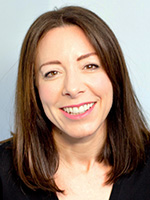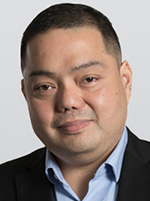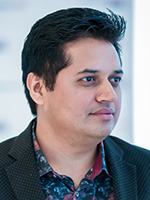
This issue’s question
“How can you interview effectively for a role in treasury?”

Laura White
Operations Director
The Treasury Recruitment Company
The art of delivering a successful interview lies in the power of the questions. So, developing your questioning skills is absolutely critical to becoming a successful interviewer. One of the best questioning techniques is the funnel technique – you start by gathering broad amounts of information and then filter down to more specific details.
Introduction
This is key to setting the standards of the interview, what you want to get out of it, and putting the candidate at ease.
Career history and experience
This is where the bulk of the interview should be focused. This is your opportunity to establish as much information as you can about the suitability of the candidate for your role.
Aspirations and goals
It is assumed, based on the very fact that the applicant is there at the interview, that the role is what they’re looking for. But by making that assumption, many bad hiring decisions can be made. Asking the right probing questions will enable you to see if there are any shortfalls here or how genuinely suitable the candidate is for the role.
Search status
The next stage is information gathering around the applicant’s search so far. This section is often missed by interviewers, but it allows you to identify which individuals are at risk of being offered roles elsewhere, or counter-offers from their existing employer.
Personal details
This section focuses on the specific details around current salaries, benefits packages and notice periods, as well as additional information which may impact hiring decisions or processes.
Job brief and sell
In many cases, interviewers opt to start the interview by giving the applicant an overview of the role they’re recruiting and what they’re looking for. The debate here though is, how can you sell the specific aspects of the role that are relevant to that applicant, before you know what they are looking for?
Next steps
The final stage is what you do after the applicant leaves the building. It is very easy to focus your follow-up efforts only on candidates that you’re interested in. You never know when your paths may cross again. You don’t know who that person knows. Treat them how you would expect to be treated yourself, always provide feedback from the interview and follow up when you say you will.

Gary De Guzman
Director
Pure Search International
The process behind interviewing candidates for treasury roles is largely the same as for other areas. Being able to balance structured and technical questions alongside unstructured, more personal questions makes for a good interview and enables an interviewer to really assess and understand the individual.
For the structured side of the discussion introduce the company, the structure of the team, its culture, how things are run, the expectations of the role – really give the candidate a sense of what life will be like in the role. They will need to understand what the role requires and what skillset is needed to be successful. The structured part of the interview is a good opportunity to probe the suitability of the candidate’s technical skills.
Although structured, technical questions are expected, it’s always advisable to be mindful of ensuring the discussion doesn’t become robotic or one dimensional.
The less structured parts of the discussion can punctuate the necessary questions and start to build a more natural flow to the discussion. It’s a great opportunity to inject some personality into the interview and equally to find out more about the individual’s personality rather than only their skill set. This allows you to establish whether they’d be a good cultural fit for the team and the business as a whole. Take this opportunity to make a positive impression to a future team member as the overall candidate experience will continue to increase in importance.
The order of having unstructured and structured interviewing techniques depends on the style of the interviewer. Every interview is a two-way street and the interviewer is not the only one deciding if it is worthwhile to continue with the interviewing process given the interviewee will be assessing this as well.
Although obvious, it’s important to be mindful of unconscious bias when interviewing. Focusing on the individual and on their professional relevancy for the position is key. Asking the questions that can assess a candidate’s suitability and technical skills that can then be contextualised against others will allow for a fair and honest assessment of who best fits the requirements of the role.
For candidates, the best advice is to be well prepared and to stay positive. If you have been presented for an opportunity via a headhunter, utilise them. They will be a great source of information about the hiring manager, the culture of the team, the company in general and the skill set required for that particular role.

Praveen Juyal
Treasury Manager
Amway India
Many people say that treasury is the heart of finance, but I feel that if finance is ‘hardware’ then treasury is ‘software’. Without software, hardware is of no use. Accordingly, without proper treasury personnel, finance cannot succeed.
Making sure the right person is managing treasury is the responsibility of the person who hires for that position. So, based on my personal experience, the questions you should be asking are dependent on the way you ask them, and your understanding of that question: asking is an art.
Generally, there are two types of questions we ask at interview. One is structured and the other is unstructured.
- Structured questions are the questions which can be answered in a specific way, such as yes, no, true, false, know, don’t know.
- Unstructured questions are questions which can be adapted to suit the interviewee. It is a spontaneous conversation without a pre-determined set of questions. Asking questions based on the previous answer is the approach in this method.
I personally feel, a mix of structured and non-structured questions are required to know about the candidate. Again they are two sides of a coin and both are equally important.
Let’s start with:
Introduction
This is a way to get to know the candidate. This is an old technique, but ‘old is gold’. Ask lots of questions so that the candidate feels comfortable. The questions may be both structured and non-structured.
Previous experience
This is an area which has the potential to generate a lot of questions. In other words, the more you explore this area, the better you will know the candidate.
Thinking ability
Ask ‘out of the box’ questions. Keep the candidate going and you will learn their thinking ability – a core part of treasury.
Analytical skills
The candidate for this role should be good at analytics. Questions on forecasting, collections, payments and reconciliations can be asked. This will lead you to understand their micro knowledge of the work.
Projects handled
It’s important to know the assignments handled by the candidate in their previous organisation. It can help you to understand their work-handling capacity.
Risk-handling capacity
It is an important part of the treasury profile. There are a lot of risks we manage on a daily basis. It may be the requirement of working capital, the fund flow management, hedging, interest rates, surplus funds and so on. So, the questions should be framed around this.
Future aspirations
It is important to know the candidate’s future goals. If they say “I want to work with this organisation for a long time”, then immediately you can check their previous experience and how long they have been working with their present organisation. It can be a tricky question for the candidate.
Feedback
This is the final stage of the overall process. Tell them what you felt about their performance during the interview, and if possible, give some suggestions on how they can improve. At the same time, give them time for queries/questions arising from the interview. Accurate feedback comes from taking notes so make sure whenever you are interviewing, have pen and paper to hand and use them!
The progress of every interview is dependent on the candidate’s nature. Each of us is different, so the same pattern of interview cannot be followed for all for it to be truly effective. And I can guarantee no one can fully understand a person in a few hours; you need to spend more time with them.
Finally, these steps are just an indication of how to conduct the interview based on my own personal experience.
Next question:
“Does the move to digitisation cause more problems than solutions?”
Please send your comments and responses to qa@treasurytoday.com